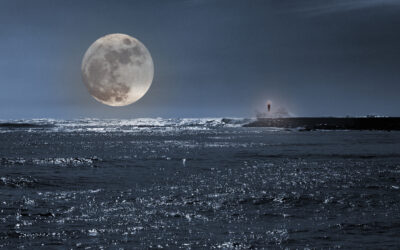When we think of the coldest places in the universe, we typically imagine the far reaches of space, distant from the warmth of stars. However, the coldest spot in the universe is actually right here on Earth, buried beneath the border between France and Switzerland. This icy location is found within the Large Hadron Collider (LHC), the world’s most powerful particle accelerator, operated by CERN (the European Organization for Nuclear Research).
The LHC, located near Geneva, Switzerland, is a 27-kilometer (17-mile) circular tunnel buried deep underground. This enormous facility is famous for groundbreaking scientific experiments, particularly its role in the discovery of the Higgs boson in 2012. But aside from its scientific achievements, the LHC is notable for reaching temperatures colder than the vacuum of space.
Outer space, while freezing by human standards, averages around -270°C (about 3 Kelvin) above absolute zero. However, the LHC’s superconducting magnets are cooled to an astonishing -271.3°C (1.9 Kelvin), which is even closer to absolute zero—the theoretical point at which all molecular motion ceases. These frigid conditions are necessary for the LHC’s magnets to function properly.
The reason the LHC operates at such extreme cold temperatures is due to the use of superconducting magnets, which are vital for guiding particles through the collider. Superconductors are materials that, when cooled to very low temperatures, can conduct electricity with zero resistance. This makes them highly efficient for creating the powerful magnetic fields needed to steer high-energy particles around the LHC’s ring at nearly the speed of light.
To achieve this ultra-cold environment, the LHC is equipped with a massive cryogenic system, one of the largest in the world. Liquid helium is used to cool the magnets to their operating temperature. Maintaining this level of cold is no small feat, and it’s essential for the LHC to carry out its high-precision particle collisions.
The extreme cold is one of the reasons why the LHC can push the boundaries of modern physics, allowing scientists to recreate conditions that existed just moments after the Big Bang. These experiments help researchers explore fundamental questions about the nature of matter, energy, and the universe itself.
So, while we may think of the vast, dark cosmos as the coldest place imaginable, the coldest spot known to us is actually right here on Earth, under the rolling hills of the France-Switzerland border, in the pursuit of unlocking the secrets of the universe!
Related Articles
The Origins of April Fools’ Day—A Celebration of Tricks and Pranks
The origins of April Fools’ Day are uncertain, but one theory links it to 1582, when France switched from the Julian calendar to the Gregorian calendar. People who didn’t get the memo and continued...
The History of Camels—Nature’s Ultimate Desert Survivors
Camels have been desert dwellers for millions of years, but their adaptations make them one of the most resilient animals on Earth. Contrary to popular belief, camels don’t store water in their...
The Science of Tides—The Moon’s Pull on Earth
Tides are the rise and fall of ocean water, caused mainly by the gravitational pull of the moon. As the Earth rotates, the moon’s gravity pulls on the oceans, creating bulges of water that result in...





